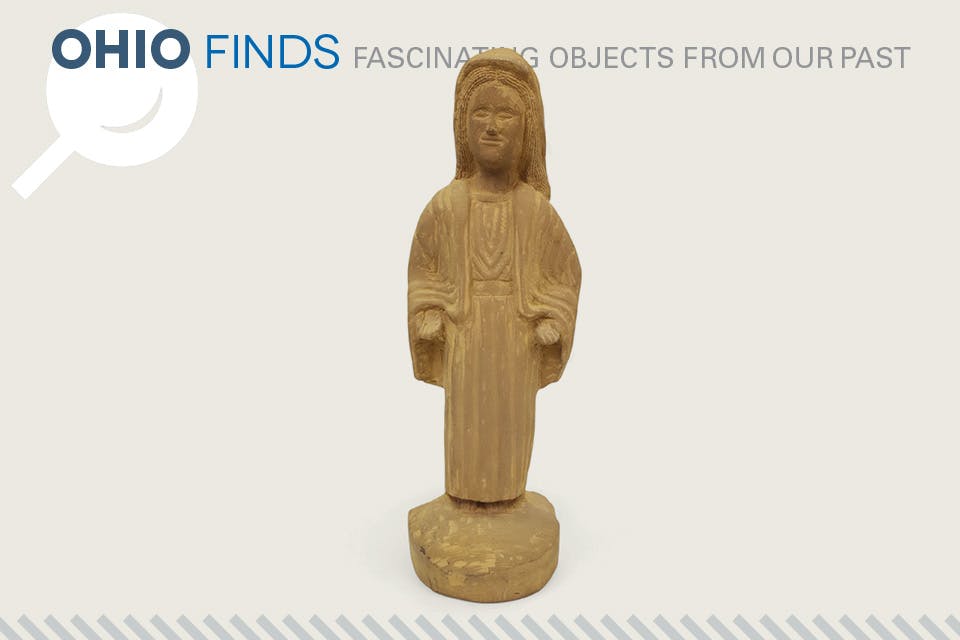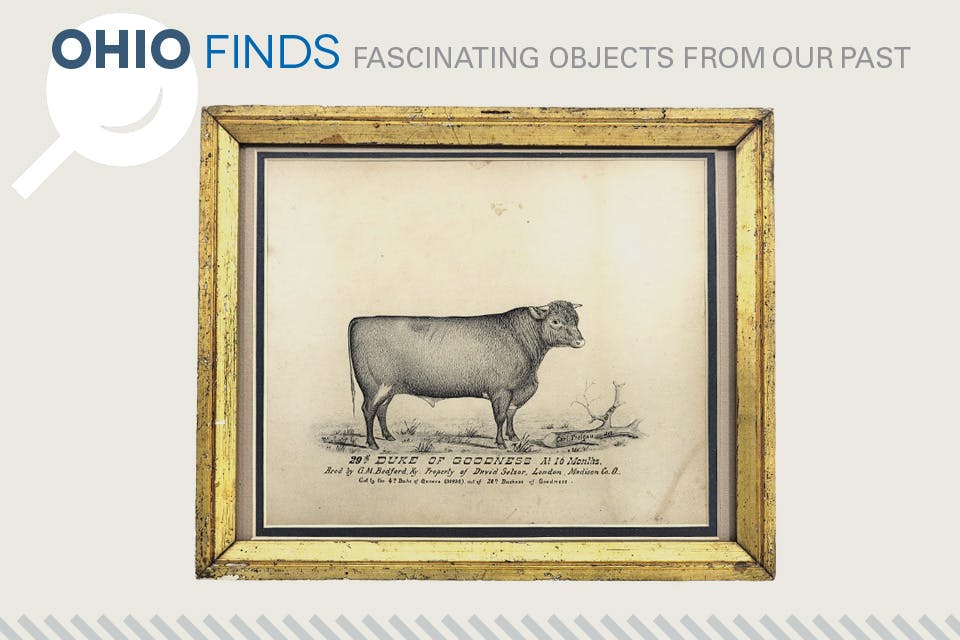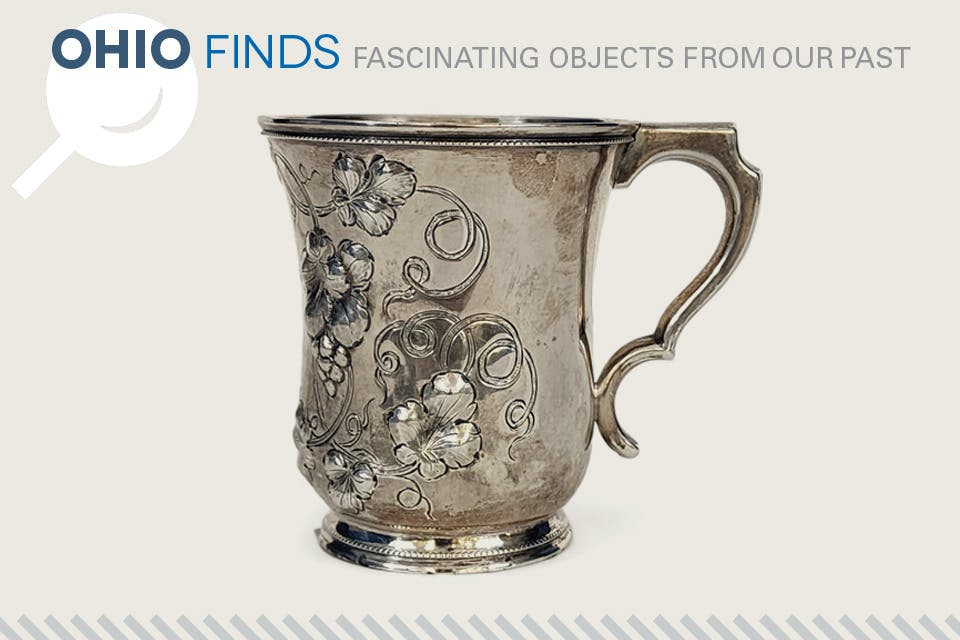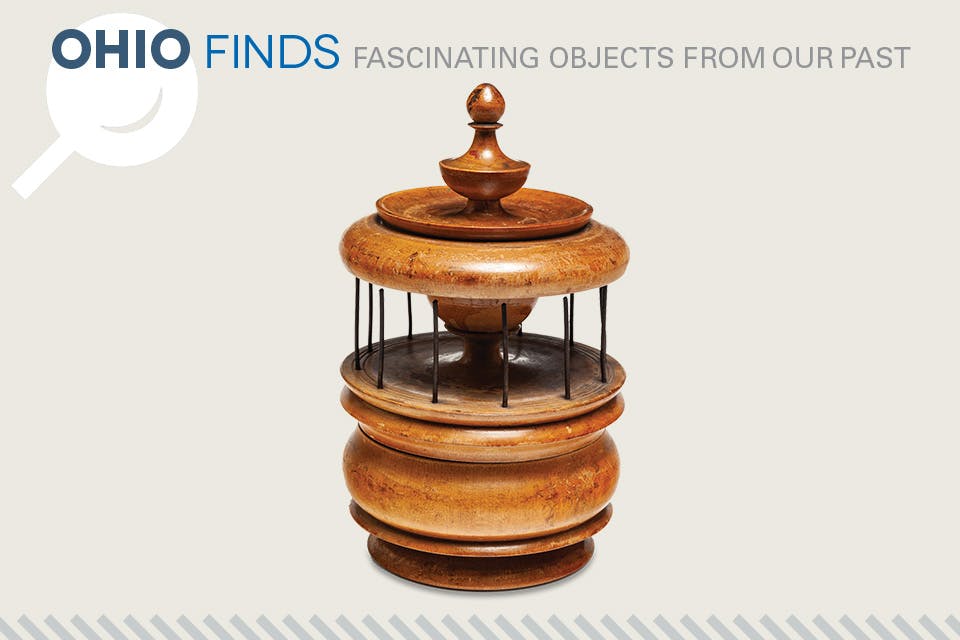Ohio Life
Ohio Finds: Peaseware Sewing Caddy
This sewing caddy, treasured by collectors across the United States, was made by David Mills Pease in Ohio during the second half of the 19th century.
Related Articles

Ohio Finds: ‘Popeye’ Reed Sandstone Figure
This 20.5-inch carving dates to the 1970s or ’80s. READ MORE >>

Ohio Finds: Bull Portrait by Carl Freigau
Ohio farmer David Selsor commissioned this artwork in the early 1800s. READ MORE >>

Ohio Finds: Ohio State Fair Cup
This coin silver cup with floral and grapevine decoration was once awarded to first-place winners at the Ohio State Fair. READ MORE >>



